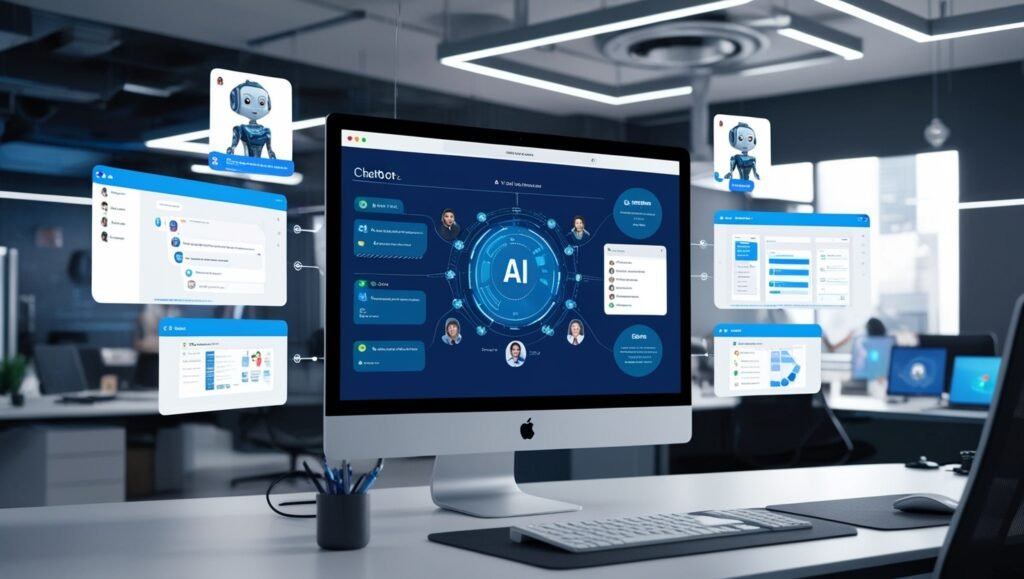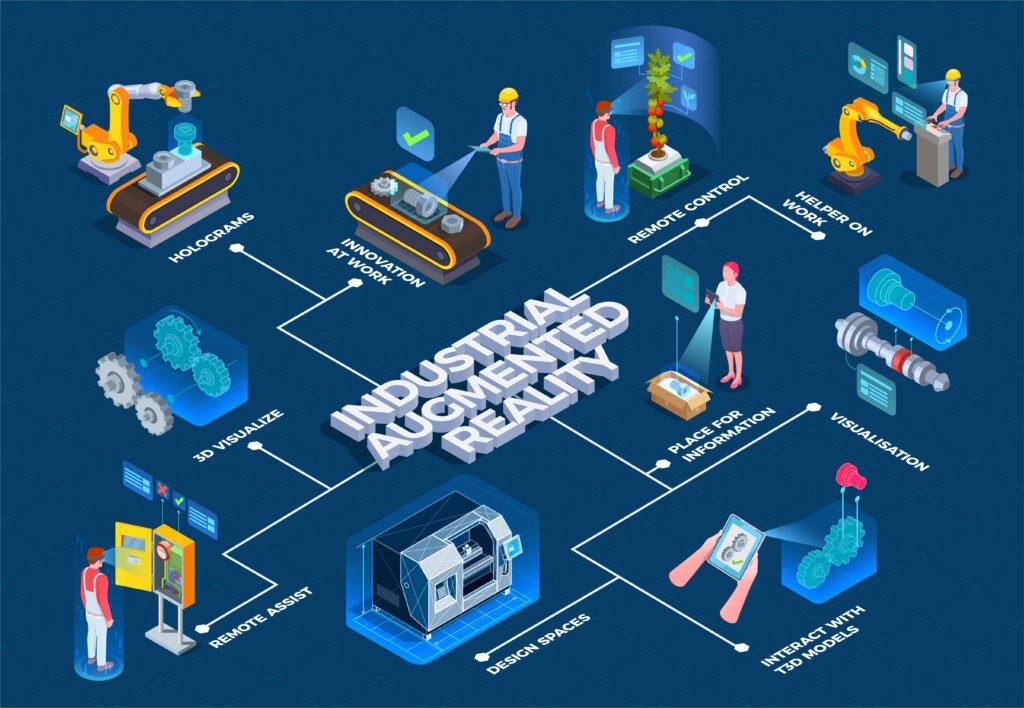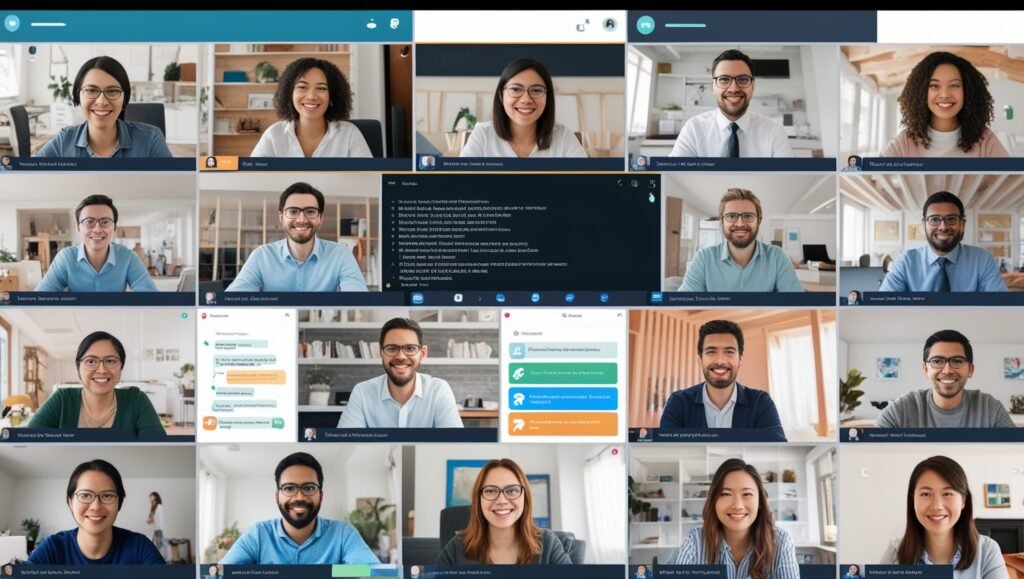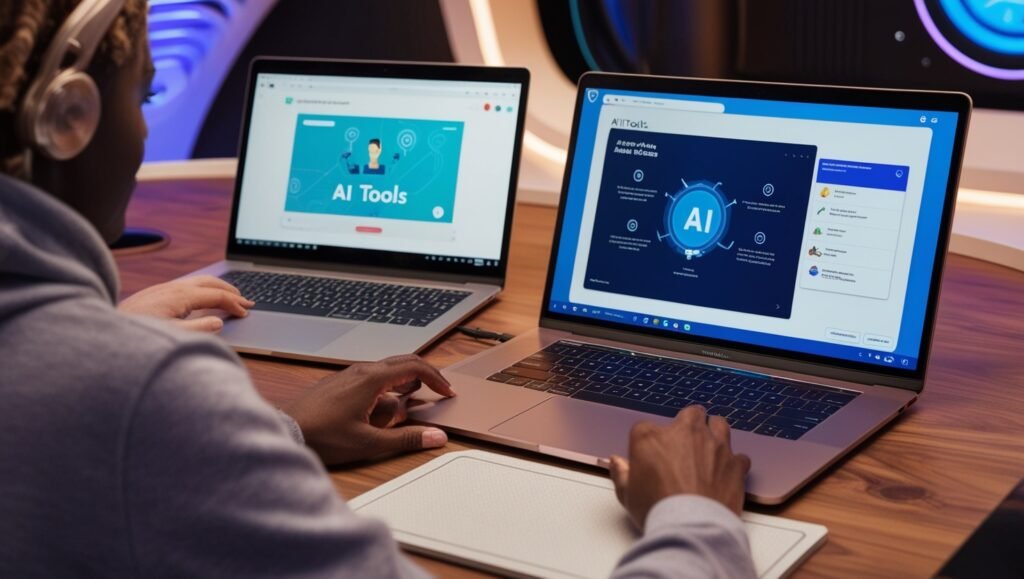How to Use AI Tools to Boost Your Work Efficiency in 2024

Time is one of our most valuable resources, and in today’s fast-paced world, managing it well can make a big difference. As we head into 2024, more people are discovering the potential of AI tools to streamline tasks, lighten workloads, and skyrocket productivity. If you’re looking to integrate AI into your workflow and get more done, here’s how to get started.
Table of Contents
Toggle1. Understanding AI Tools
So, what exactly are AI tools? These are software programs powered by artificial intelligence, designed to handle tasks that would typically require human input. From analyzing data to creating content or even managing projects, AI tools are transforming the way we work. And in 2024, they’ve become more accessible than ever.
Tools Worth Checking Out:
- ChatGPT: Need help drafting emails, brainstorming ideas, or creating content? ChatGPT is your go-to. It’s versatile and can handle everything from reports to creative projects, making it a must-have for professionals.
- Trello (with AI Power-Ups): Trello is already a great project management tool, but its AI Power-Ups take it further by automating task assignments and offering insights into project progress.
- Grammarly: Perfect your writing with Grammarly’s AI-driven grammar and style suggestions. Whether it’s an email or a report, it ensures your communication is polished and professional.
- Canva’s AI Features: Don’t have design skills? Canva’s AI tools can suggest layouts and designs, helping you create stunning visuals in no time.
- Hootsuite: Managing social media? Hootsuite’s AI capabilities analyze engagement data and suggest optimal posting times to help you maximize reach.
2. Automating Repetitive Tasks
Repetitive tasks can drain your energy and waste your time. The good news? AI tools are excellent at handling these for you. From responding to customer inquiries to organizing files, there’s an AI tool to do the heavy lifting.

Tools to Try:
- Zendesk Chat: This AI-powered chatbot is like having a virtual customer service rep working round the clock. It handles FAQs and escalates complex issues to human agents when needed.
- Zapier: Think of Zapier as a bridge connecting your favorite apps. It automates tasks, like saving email attachments directly to Google Drive, so you don’t have to.
Real-Life Examples:
- Sephora Virtual Artist: Sephora’s AI chatbot allows customers to virtually try on makeup and get tailored recommendations. It’s been a hit, boosting online sales by 20%.
- LoweBot at Lowe’s: This in-store AI robot helps customers locate products, freeing up staff to focus on other tasks and enhancing the shopping experience.
3. Making Smarter Decisions
AI tools excel at analyzing data quickly and providing actionable insights. Whether it’s understanding customer behavior or identifying trends, these tools empower you to make better decisions.

Tools to Explore:
- Google Analytics: Dive into website traffic and user behavior insights, all powered by AI, to fine-tune your marketing strategies.
- Tableau: This tool transforms raw data into interactive dashboards, making complex information easier to digest and act upon.
Inspiring Case Studies:
- Netflix: By analyzing viewer habits with AI, Netflix creates personalized recommendations, keeping users engaged. Did you know 80% of what people watch on Netflix is based on these suggestions?
- Coca-Cola: Using AI tools like IBM Watson, Coca-Cola gathers customer feedback from social media and uses it to fine-tune products and campaigns.
4. Improving Team Collaboration
Remote work is here to stay, and collaboration tools with AI make it easier than ever for teams to stay connected. From summarizing meetings to organizing tasks, these tools ensure everyone stays on the same page.

Great Tools for Teams:
- Slack: Slack’s AI features can summarize long conversations, remind team members about deadlines, and even suggest next steps during discussions.
- Microsoft Teams: This tool simplifies virtual meetings with AI features like noise suppression, live transcriptions, and intelligent scheduling.
Examples of Success:
- IBM: IBM’s Watson helps remote teams communicate more effectively by summarizing meetings and suggesting action items. The result? A 30% boost in project efficiency.
- Cisco Webex: Webex’s AI provides real-time meeting transcriptions and post-meeting summaries, keeping teams organized and focused.
5. Leveraging AI Personal Assistants
AI-powered personal assistants like Siri or Google Assistant can help you manage your day-to-day tasks, so you can focus on what matters most. They’re like having a virtual secretary at your beck and call.

Handy Assistants:
- Google Assistant: From setting reminders to managing your calendar, this AI assistant handles a variety of tasks through simple voice commands.
- Microsoft Cortana: Need help organizing your day? Cortana integrates with your calendar to keep you on track.
Where They Shine:
- Salesforce Einstein: Salesforce’s AI assistant automates data entry and provides insights for sales teams, boosting productivity by 15%.
- Uber: Uber’s AI assistant helps drivers navigate efficiently, reducing wait times and improving operations.
6. Staying Ahead with Continuous Learning
AI tools are evolving rapidly, and staying up-to-date is crucial. By taking courses or attending webinars, you can ensure you’re using these tools to their fullest potential.

Learning Platforms:
Udemy: Offers a variety of courses tailored to beginners and professionals looking to understand AI tools across different industries. Topics range from introductory AI to advanced machine learning.
edX: Provides courses from universities like MIT and Harvard on AI technologies, including practical applications and deep dives into specific tools like TensorFlow or Python for AI development.
Pluralsight: Specializes in tech-focused courses, including AI and machine learning. You can learn how to apply AI tools to improve productivity and efficiency across different business sectors.
FutureLearn: Provides online courses from top universities and organizations that explore the applications of AI in business, data analysis, and more, often in the form of short, digestible modules.
AI For Everyone by Andrew Ng (Coursera): A beginner-friendly course that introduces AI concepts and explores how these tools can be used in business and everyday life.
Google AI: Offers free resources, including courses, tutorials, and articles to help you understand AI and how to implement it effectively in various fields.
- Coursera: Offers a wide range of courses on AI tools and their applications across industries.
Conclusion
The future of work is here, and AI tools are at the center of it. These innovative technologies are reshaping industries, empowering professionals to work smarter, not harder. By automating repetitive tasks, providing data-driven insights, enhancing collaboration, and streamlining personal productivity, AI offers endless possibilities to revolutionize how you work in 2024. To fully harness the potential of AI, it’s crucial to adopt a mindset of continuous learning. Staying updated with the latest tools and understanding their applications in your specific field can give you a competitive edge. Beyond efficiency, embracing AI also opens doors to creativity and innovation, as it allows you to focus on tasks that require human ingenuity.